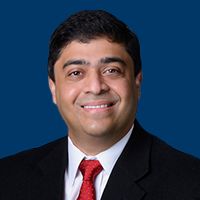Video
Adjuvant Treatment Selection in High-Risk Melanoma
For High-Definition, Click
The selection of an optimal adjuvant therapy for patients with high-risk melanoma remains challenging, particularly as more evidence becomes available on adjuvant ipilimumab. In general, treatment with high-dose interferon produces a modest survival benefit in exchange for flu-like symptoms, chronic fatigue, and fever, notes Jeffrey S. Weber, MD, PhD.
The safety profile with ipilimumab is less predictable, with a portion of patients potentially developing serious or life-threatening side effects while others experience very little toxicity, notes Weber. At this point, biomarkers are not available to help predict these side effects but in general, when comparing the side effects, most patients prefer ipilimumab to interferon, Weber notes.
In the EORTC 18701 study, treatment with adjuvant ipilimumab improved recurrence-free survival (RFS) compared with placebo for patients with stage III node-positive melanoma. At a median follow-up of 2.7 years, RFS rates were 46.5% with ipilimumab versus 34.8% with placebo. However, the 10 mg/kg dose utilized in this study resulted in high levels of toxicity.
If adjuvant ipilimumab gains approval in the US, it will not be at the 10 mg/kg dose, states Omid Hamid, MD. Additionally, toxicity management strategies and treatment algorithms for ipilimumab are better understood now than in 2011 when the drug was first approved. As a result, the utilization of this agent in the adjuvant setting is more likely, Hamid believes.
Given the lack of biomarkers, patient selection for adjuvant therapy is generally conducted based on age and other characteristics. In general, patients over the age of 70 do not generally tolerate high-dose interferon whereas ipilimumab can be administered to older patients without major issues, suggests Weber. Additionally, patients with ulcerated high-risk tumors appear to be ideal candidates for pegylated interferon, suggests Jeffrey A. Sosman, MD.
In the EORTC 18991 study, patients with stage III melanoma with microscopic nodal involvement experienced an improvement in RFS, distant metastases-free survival, and overall survival with pegylated interferon (n = 96) compared with observation (n = 90). To cull out this benefit further, a clinical trial is looking at 2 years of adjuvant pegylated interferon versus placebo in stage II patients with ulcerated melanoma, notes Hamid.
The population in this study is slightly different than the EORTC study, due to the absence of microscopic nodal metastases, notes Robert H. I. Andtbacka, MD, CM. Despite the lack of nodal involvement, outcomes are primarily dictated by the ulcerative primary tumor, believes Weber. While it is a different patient population, this study could help shed light on the value of ulceration as a biomarker for response to pegylated interferon, states Merrick I. Ross, MD.









